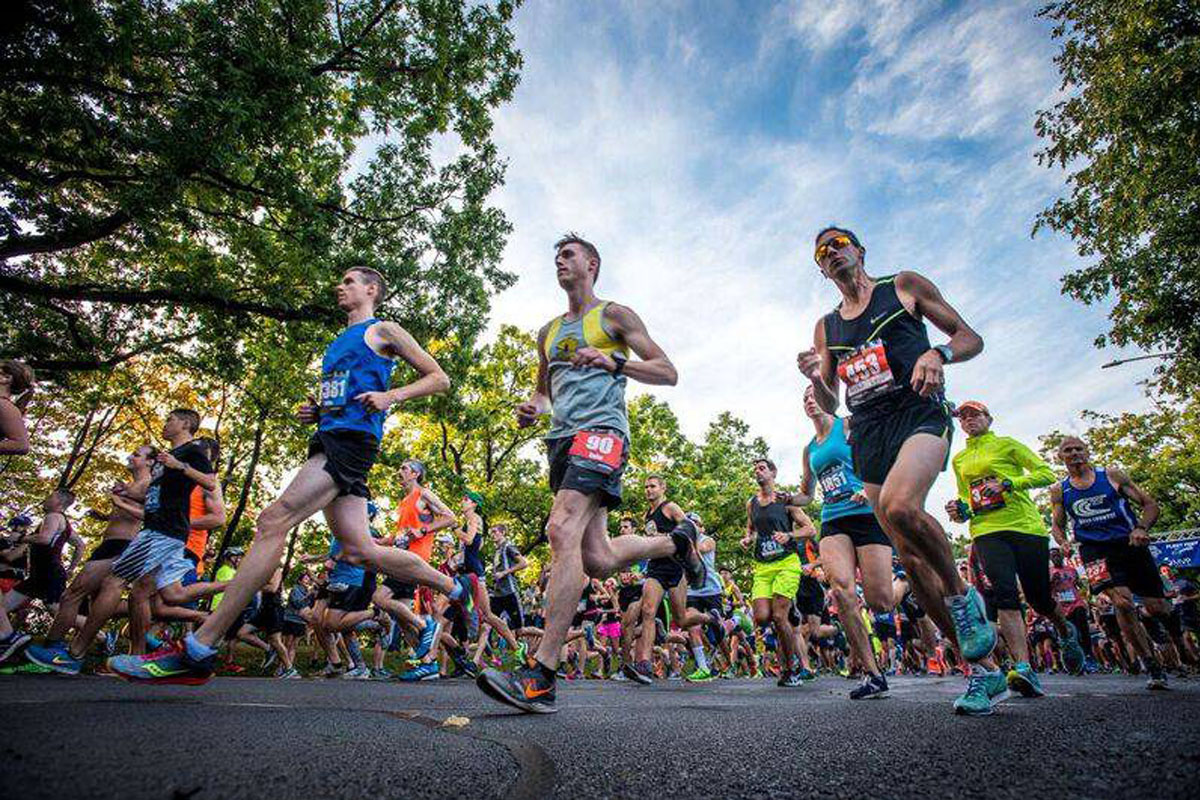Hall of Fame distance runner, collegiate cross-country coach, and author Rich Davis said that “long-distance running is 90% mental, and the other half is physical.”
It’s funny because it’s true. And it’s applicable to both trail and road runners.
According to RunRepeat’s 2019 State of Running, over the last 10 years, overall participation in races such as the half marathon (13.1 miles) and full marathon (26.2 miles) has grown, even with a decline in the last few years. Currently, there are roughly 2 million half-marathon runners and around 1 million full marathoners worldwide.
Those roughly 2 million souls who answer the starting gun for their 13.1-mile quest have most certainly put time into their physical endurance. But one training element that veteran runners have mastered and less experienced runners need to work at is getting their minds in shape.

Know the Half-Marathon Stages
There are definitive mental stages in running a half marathon. Runners start out with a mind full of enough adrenaline to power an Everest climb. Once the adrenaline tank empties, the mind then relies on its basic toughness to defiantly say, “I’ve got this.”
Once the limit of that toughness is reached, doubt and panic creep in, and you consider stopping by one of the houses along the route to call an Uber. An internal deadlock in negotiations between your ego and your legs tends to take over until you cross the finish line, at which point elation kicks in, and you sign up for another race.
Understand Your Endurance
Presuming that you’re already putting in miles in preparation for your half marathon, the trick to a stronger mental game is to pay close attention to the timing of the different parts of your run.
There’s always a warmup period, which tends to be 2 to 4 miles for longer-distance runners. Let’s call it 3 miles, for the sake of this example. Your pace overall is slower. You don’t push it, because this is the period of time when you settle into your rhythm, you feel your joints start to move with less effort, your breathing paces your footfalls, and those footfalls begin to feel lighter.

Once warmed up, you settle into a string of 6 to 10 strong miles at a faster pace. Pay attention to when the struggle bus pulls up alongside you. We’ll say that happens at 8 miles, for our purposes.
Now, you slow your pace and head for your brick wall. You might gut it out for another few miles, more or less. Whatever the distance, consider it the only thing standing between you and a post-run cold beer or Gatorade.
Apply Your Knowledge
There’s a saying: Run your own race. This is an important piece of advice regardless of your age or experience, especially when you’re looking at the crowd at the starting line. You’re not running against them. You’re on your own running alongside everyone else.

When you start, remember your warmup pace and distance. Don’t follow the herd’s current. Take that 3-mile time period to get yourself settled in and comfortable. When you’ve finished the warmup, you’ll have 10.1 miles left. Tell yourself, “Okay, 10.1 left.”
Now, settle into your strong-mile stretch. You know you’re confident for at least 8 miles. You’ve run it before. Count down the miles out loud at each marker until that struggle bus shows up. If it shows up.
At this point, the only thing between you and that refreshing drink of choice is maybe a couple of miles. Probably fewer. Since you didn’t waste all your adrenaline at the start of the race, go ahead and pour some fuel on that fire. You’ve earned it.
Read Next: Why Running Still Matters








Comments